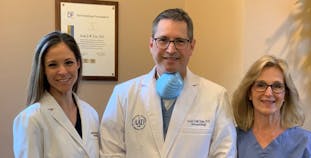Advance Online

Advance Online
Caring for Patients During the Pandemic Shutdown
This dermatologist, with the help of his wife and daughter, faced the COVID-19 pandemic and continued to provide care for his patients.

This dermatologist, with the help of his wife and daughter, faced the COVID-19 pandemic and continued to provide care for his patients.
We use cookies to offer you a better experience and analyze our site traffic. By continuing to use this website, you consent to the use of cookies in accordance with our Privacy Policy.